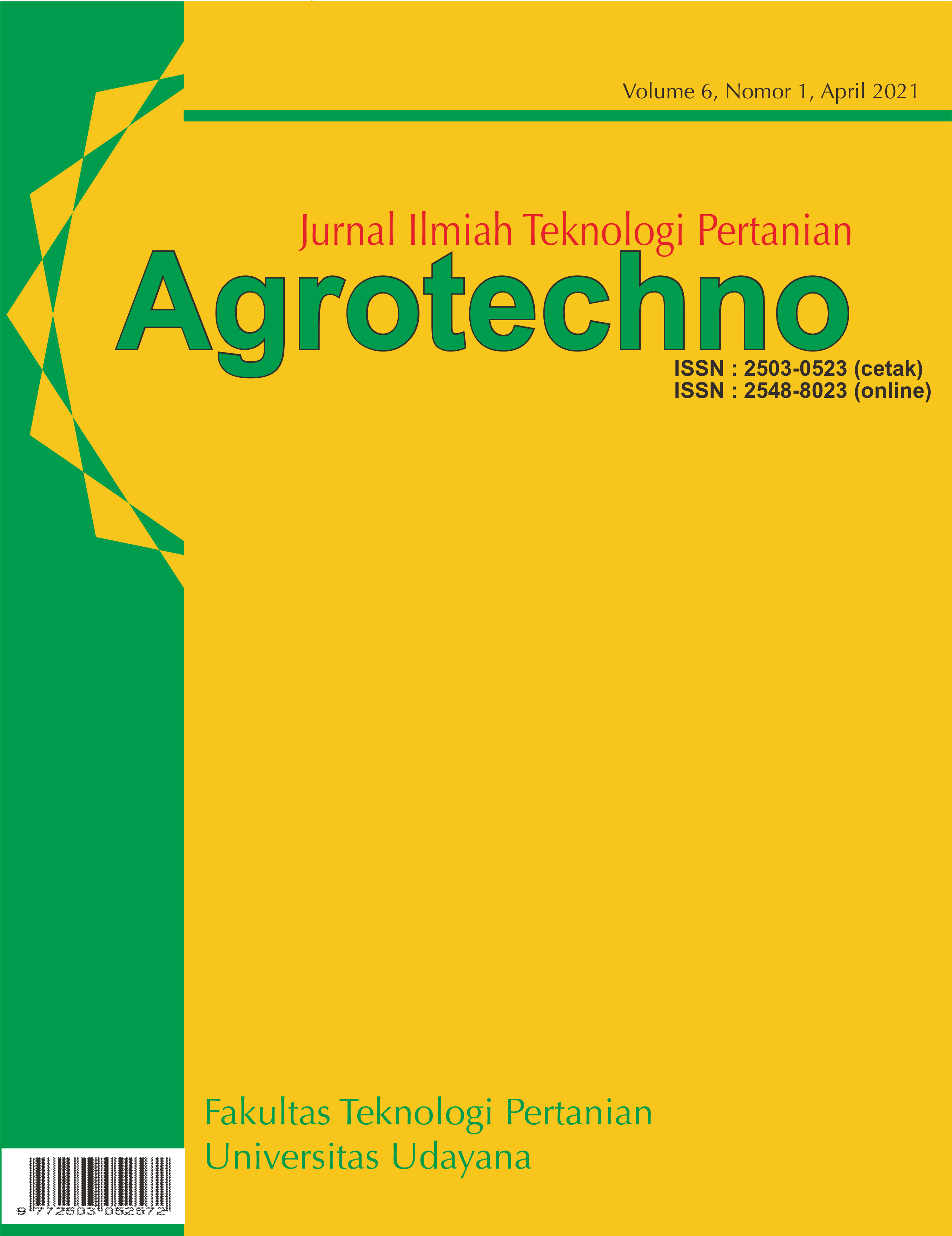Strategic Planning for Green Logistics Implementation in Potato Agro-Industry
Abstract
Indonesia is the largest potato producer in Southeast Asia. Annual production averaged 1.09 million tons. However, productivity is still low, ranging from 16.4 - 18.22 tons/ha. The objective of this study was to propose a strategic planning of the Green Logistic Distribution Center (GLDC) in the potato agro-industry using Interpretative Structure Modeling (ISM). A contribution of this research was that we used ISM to analyze the sustainability policy of the green logistics program which includes social, economic, and environmental issues. The result showed that the objectives such as availability of raw materials (1), supplier of potato (3), market place (5), traffic transportation (7), economic factor (8), and environmental issue (9) include variable linkages from the system. Every action on these objectives will result in a successful GLDC program, while the lack of attention to these objectives will lead to program failure. In this case, the driver power is large but has little dependence on the program. While the other sub-elements of purpose are categorized as dependent, this is interpreted more as a result of other objective actions. With two forms of information, ISM and DP-D matrix diagrams, the deepening of the GLDC program is made possible to support strategic planning.
Downloads
References
Bag S, Anand N. 2014. Modeling Green Supply Chain Management framework using ISM and MICMAC analysis. African Journal of Business Management 8(22):p.1053–1065.
El-Berishy N, Rügge I, Scholz-Reiter B. 2013. The interrelation between sustainability and green logistics, IFAC.
FAO. 2009. New Light on a Hidden Treasure: End of Year Review
Gupta A, Singh RK, Suri P. 2017. Modeling the barriers of Indian logistics service providers : ISM approach. 9(1):p.3–4.
Huang L, Yu J, Huang X. 2012. Modeling agricultural logistics distribution center location based on ISM. Journal of Software 7(3):p.638–643.
Hussain M, Awasthi A, Tiwari MK. 2016. Interpretive structural modeling-analytic network process integrated framework for evaluating sustainable supply chain management alternatives. Applied Mathematical Modelling 40(5–6):p.3671–3687.
Jayant A, Azhar M. 2014. Analysis of the barriers for implementing green supply chain management (GSCM) Practices: An Interpretive Structural Modeling (ISM) Approach. Procedia Engineering 97(1):p.2157–2166.
Kulkarni PB, Ravi K, Patil SB. 2018a. Interpretive Structural Modeling (ISM) for Implementation of Green Supply Chain Management in Construction Sector within Maharashtra . International Research Journal of Engineering and Technology (IRJET):p.2460–2472.
Kulkarni PB, Ravi K, Patil SB. 2018b. Interpretive Structural Modeling (ISM) for Implementation of Green Supply Chain Management in Construction Sector within Maharashtra . :p.2460–2472.
Luthra S, Garg D, Kumar S, Haleem A. 2012. Implementation of The Green Supply Chain Management in Manufaturing Industry In India Using Interpretive Structural Modeling Technique. BPR Technologia : A Journal of Science, Technology & Management 1 1(1):p.1–17.
Marimin, Maghfiroh N. 2011. Aplikasi Teknik Pengambilan Keputusan dalam Manajemen Rantai Pasok
Mathiyazhagan K, Govindan K, NoorulHaq A, Geng Y. 2013. An ISM approach for the barrier analysis in implementing green supply chain management. Journal of Cleaner Production 47(May):p.283–297.
Moreno P, Lozano S, Adenso-Diaz B, Garcia-Carbajal S. 2016. Influence of the environmental impact of logistics operations on the centralization strategy. In International Conference on Industrial Engineering and Systems Management, IEEE IESM 2015. pp. 556–560.
Pillay K, Mbhele TP. 2015. The Challenges of Green Logistics in the Durban Road Freight Industry. Environmental Economics 6(1):p.64–73.
Rukmayadi D, Marimin, Haris U, Yani M. 2016. Rubber agro-industry green logistic conceptual model. International Journal of Supply Chain Management 5(3):p.192–204.
Seroka-Stolka O. 2014. The Development of Green Logistics for Implementation Sustainable Development Strategy in Companies. Procedia - Social and Behavioral Sciences 151(10):p.302–309.
Singhal D, Tripathy S, Jena SK, Nayak KK, Dash A. 2018. Interpretive structural modelling (ISM) of obstacles hindering the remanufacturing practices in India. Procedia Manufacturing 20:p.452–457.
Suprihatin. 2009. Manfaat Ekologis dan Finansial Pemanfaatan Limbah Cair Agroindustri sebagai Bahan Baku dalam Produksi Biogas untuk Mereduksi Gas Rumah Kaca. Journal Agromet 23(9):p.101–111.
Vidova H, Babcanova D, Witkowski K, Saniuk S. 2012. Logistics and Its Environmental Impacts. In International Scientific Conference Business and Management. pp. 1007–1014.
Yusianto R., Marimin, Suprihatin, Hardjomidjojo H. 2019. Green Logistics Approach in Bioethanol Conversion from Potato Starch in Central Java. IOP Conference Series: Materials Science and Engineering 598(1):p.1–9.
Yusianto R., Sundana S, Marimin, Djatna T. 2020. Method and mapping of trust and trustworthiness in agroindustry logistic and supply chain: A systematic review. International Journal of Supply Chain Management 9(1).
Yusianto Rindra, Marimin, Suprihatin, Hardjomodjojo H. 2020. Spatial Analysis for Crop Land Suitability Evaluation : A Case Study of Potatoes Cultivation in Wonosobo, Indonesia. International Seminar on Application for Technology of Information and Communication (iSemantic) 1(1):p.313–319.
Zanjirani R, Steadieseifi M, Asgari N. 2010. Multiple criteria facility location problems : A survey. Applied Mathematical Modelling 34(7):p.1689–1709.
Zhai Y, Li Y. 2017. The Research on Influencing Factors of Medical Logistics Cost Based on ISM Model. MATEC Web of Conferences 100:p.02030.
Zhang M, Sun M, Bi D, Liu T. 2020. Green Logistics Development Decision-Making: Factor Identification and Hierarchical Framework Construction. IEEE Access 8(1):p.127897–127912.










